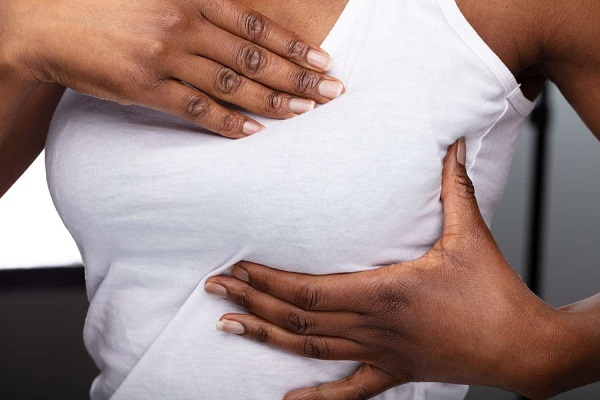A major global health issue, breast cancer is the most commonly diagnosed cancer and a leading cause of cancer death in women. Although rare, breast cancer can also affect men. In 2022, there were an estimated 2.3 million new cases of breast cancer and 670,000 deaths worldwide. Developed countries generally have higher incidence rates, but low- and middle-income countries take a lopsided share of deaths due to several factors.
Nigeria recorded 28,380 new breast cancer cases in 2020, accounting for 22.7% of all new cancers. The age-standardised mortality rate for breast cancer in the country is among the highest globally and the highest in Africa, according to the World Health Organisation. A substantial number of women (over 70%) are diagnosed at advanced stages (III and IV), and the high mortality is attributed to factors including inadequate awareness, late diagnosis, poor health-seeking behaviour, and limited access to timely and effective treatment.
Now, breast cancer begins when breast cells undergo genetic mutations, causing them to divide and grow uncontrollably. These abnormal cells can form a mass or lump, known as a tumour, which can be either benign (non-cancerous) or malignant (cancerous).
Breast cancer can be categorised as either “in situ”, which means it is contained within the ducts or lobules, or “invasive”, which means it has spread to surrounding tissues. If the cancer is invasive, it can spread through the lymphatic system or bloodstream to other parts of the body. The most common types of breast cancer are invasive ductal carcinoma (originating in the milk ducts) and invasive lobular carcinoma (originating in the lobules).
Advertisement
Much as the exact cause of most breast cancers is unknown, some risk factors can increase a woman’s chances of developing the disease. Breast cancer risk increases with age, with the majority of cases occurring in women after puberty and particularly after the age of 55. Having a mother, sister, or daughter with breast cancer, especially at a young age, inherited gene mutations, like those in BRCA1 and BRCA2, as well as late menopause, early menstruation, and never having children, can increase oestrogen exposure, thus increasing potential risk. Obesity, alcohol consumption, and smoking are also linked to increased risk of breast cancer.
In addition, long-term use of hormone replacement therapy after menopause has been associated with a higher risk. Radiation therapy to the chest area, particularly at a young age, also increases the risk. Dense breasts can make it harder to detect tumours on mammograms, and this may itself be a risk factor.
It is important to note that many women diagnosed with breast cancer have no known risk factors, and some with multiple risk factors may never develop the disease. It is, therefore, likely that breast cancer results from a combination of genetic predisposition and environmental factors.
Advertisement
The most common symptom of breast cancer is a lump or thickening in the breast or armpit, which may feel like a hard, rubbery, or soft mass. There can be changes in breast size or shape; one breast may become noticeably larger than the other, or the overall shape of the breast may change. Skin changes can equally be a symptom, and this can include dimpling (like an orange peel), redness, puckering, or scaling of the skin on the breast. Nipple inversion (turning inward), discharge (especially if it is bloody), or changes in the nipple’s appearance (like redness or a rash) can similarly be a symptom. An open sore on the nipple or breast may also be a sign.
Although breast pain alone is usually not a sign of cancer, persistent pain in one area of the breast or armpit should be quickly checked by a doctor. Inflammatory breast cancer can cause a rash that appears suddenly, is red, pink, purple, or discoloured, and covers a large area of the breast.
Regular screening and self-exams are crucial since many women do not experience symptoms in the early stages of breast cancer. And while a lump is the most common symptom of breast cancer, most breast lumps are benign (not cancerous). However, if you notice any of the aforementioned symptoms, it is essential to see a doctor for a proper diagnosis, as many breast cancers are treatable, especially when caught early.
Now, prevention of breast cancer usually focuses on lifestyle choices and medical strategies to reduce the risk of developing the disease. Maintaining a healthy weight, particularly after menopause, is crucial, as obesity is linked to increased breast cancer risk. Regular moderate exercise, such as a daily 30-minute walk, can significantly lower the risk of breast cancer compared to a sedentary lifestyle. Limiting or avoiding alcohol is recommended, as it is associated with an increased risk of breast cancer. Tobacco use is also linked to increased breast cancer risk, so avoiding smoking is essential.
Advertisement
Breastfeeding for at least six months can equally provide some form of protection. In addition, a diet rich in fruits, vegetables, and whole grains, with limited red meat and sugary drinks, is recommended.
In terms of medical strategies for the prevention of breast cancer, certain medications can be used to reduce breast cancer risk in high-risk individuals, though underutilisation remains a concern. The risks and benefits of hormone replacement therapy for menopause symptoms have to be critically weighed, as it can increase breast cancer risk.
For those with a strong family history of ovarian or breast cancer, genetic testing for mutations such as BRCA1/2 can help assess risk and inform preventative strategies. In some cases, the surgical removal of ovaries or one or both breasts may be considered for those with an extremely high risk due to genetic mutations. Mammograms, though not a preventative measure, play a vital role in early detection, which considerably improves survival rates. And, while medical imaging is important, minimising unnecessary exposure to radiation, such as from CT scans, is often advised.
This October, which is Breast Cancer Awareness Month globally, the story of breast cancer should concern all of us. This story should be written daily by scheduling or encouraging someone to schedule that mammogram that has been put off, learning individual family history, and putting behind the fear of the unknown. And it is a narrative that is increasingly defined by the understanding that while we cannot control every outcome, we can arm ourselves with necessary information, which is critical in reducing risks and ensuring early detection, thereby boosting survival rates and quality of life for those affected by breast cancer.
Advertisement
Ojenagbon, a health communication expert and certified management trainer and consultant, lives in Lagos.
Advertisement
Views expressed by contributors are strictly personal and not of TheCable.










